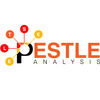In a world where everything is globalized, strategic analysis tools such as SWOT and PEST are no longer internal exercises alone — now, they are becoming multilingual and multicultural. Whether you're expanding into a new market in Southeast Asia, negotiating a partnership deal in Europe, or researching competitors in Latin America, you're likely to come across insights and data in foreign languages. This is where a text translator can quietly but powerfully enhance your strategic thinking.
Let's make one thing clear: the foundation of any SWOT (Strengths, Weaknesses, Opportunities, Threats) or PEST (Political, Economic, Social, Technological) analysis is your insight into your environment. So, what do you do if key local insight, policy documents, or consumer attitudes are written in a language you can't read? When you base decisions on summaries or second-hand translations, not only are you wasting time — it's also resulting in a biased or partial strategy.
With the help of a trustworthy text translator, you can rapidly and accurately decipher foreign documents, regulatory announcements, or societal insights and have your team conduct more comprehensive and unprejudiced analyses. It's simpler to catch up with sector trends, local issues, or chances overlooked by rivals because of language limitations. Since you are able to examine the content in context, your findings are more informed, and your risk of misinterpretation is significantly minimized.
Let's explore further how this occurs in both PEST and SWOT analyses.
The Use of Language in SWOT Analysis
A SWOT analysis is only as good as the research it is based on. For global or multilingual markets, that research may consist of regional blogs, niche trade publications, industry white papers, and government reports — all of which are not necessarily in English. By including translations of these sources, you gain a more representative and comprehensive understanding of the market. Here's why:
- Opportunities & Threats
Opportunities tend to hide behind changing cultural trends or new laws. These get debated first in local media, policymaking circles, or social media. With a translator, you get to track these debates and move early. Threats would be legal shifts, geopolitical tensions, or even outrage. If you cannot access content in the locals' languages directly, you end up responding too late.
- Strengths & Weaknesses
If you're evaluating your own business or a rival, internal reports or local-language news articles can divulge operational strengths or chronic problems. Having access to this information puts you ahead. For example, internal grievances concerning delays in logistics or customer praise for product dependability may not be reflected in official earnings reports but can be found in employee forums or local newspapers.
How Multilingual Input Makes PEST Analysis Sharper?
Unlike SWOT, which tends to be an inward-looking exercise, PEST analysis is all about the external environment. The more you grasp the external environment, the better.
Inflation levels, job trends, and people's spending patterns tend to be localized. Local-language economic reports or central bank statements might provide more nuanced information that is not caught in mass-market English reports. For instance, consumer confidence surveys released by Spain's Instituto Nacional de Estadística or by Germany's Bundesbank tend to be more comprehensive in their original-language versions.
Government policy statements, trade talks, tariffs, or elections are all likely to impact your business. These stories tend to break first in local-language media before being shared in English-language media. Waiting solely for third-party translated abstracts can result in tardiness or misinterpretation. Rather, employing a text translator to review the source material allows you to derive your own timely opinion.
Emerging trends and digital adoption rates also differ by country. Local tech news sources or startup communities tend to show the earliest signals of what's hot. By the time you wait for the English version, your competition may already be ahead. The translated analysis allows you to keep up and stay ahead.
Consumer habits, population changes, or cultural mindsets can destroy or create a product. These are typically debated on social media, boards, and in local-language pop culture magazines. Translations are essential to avoid the less-than-obvious hints that can guide product localization or advertising campaigns. Familiarity with native slang, tone, or humor can avoid faux pas.
What This Means for Strategic Planners
Contemporary SWOT and PEST analyses need to include worldwide context. A domestic event can have worldwide ripples, and a trend in one nation can foretell potential elsewhere. Translation keeps your strategy from being language-bound, enabling you to connect the dots more quickly and accurately. It's not a matter of translating everything — it's translating what counts and doing it with care.
Strategic thinkers, marketers, compliance professionals, and C-suite executives who adopt translation tools will have a more razor-sharp, more sophisticated understanding of the world. It's an easy change that brings disproportionate returns, particularly when working across borders and cultures.
Final Thought
Language must never stand in the way of comprehending your market — or your future. Using a text translator is not just possible, but it can be a powerful tool to expand the horizons of your SWOT and PEST analysis. It's no substitute for thinking strategically. It's a stimulant.


